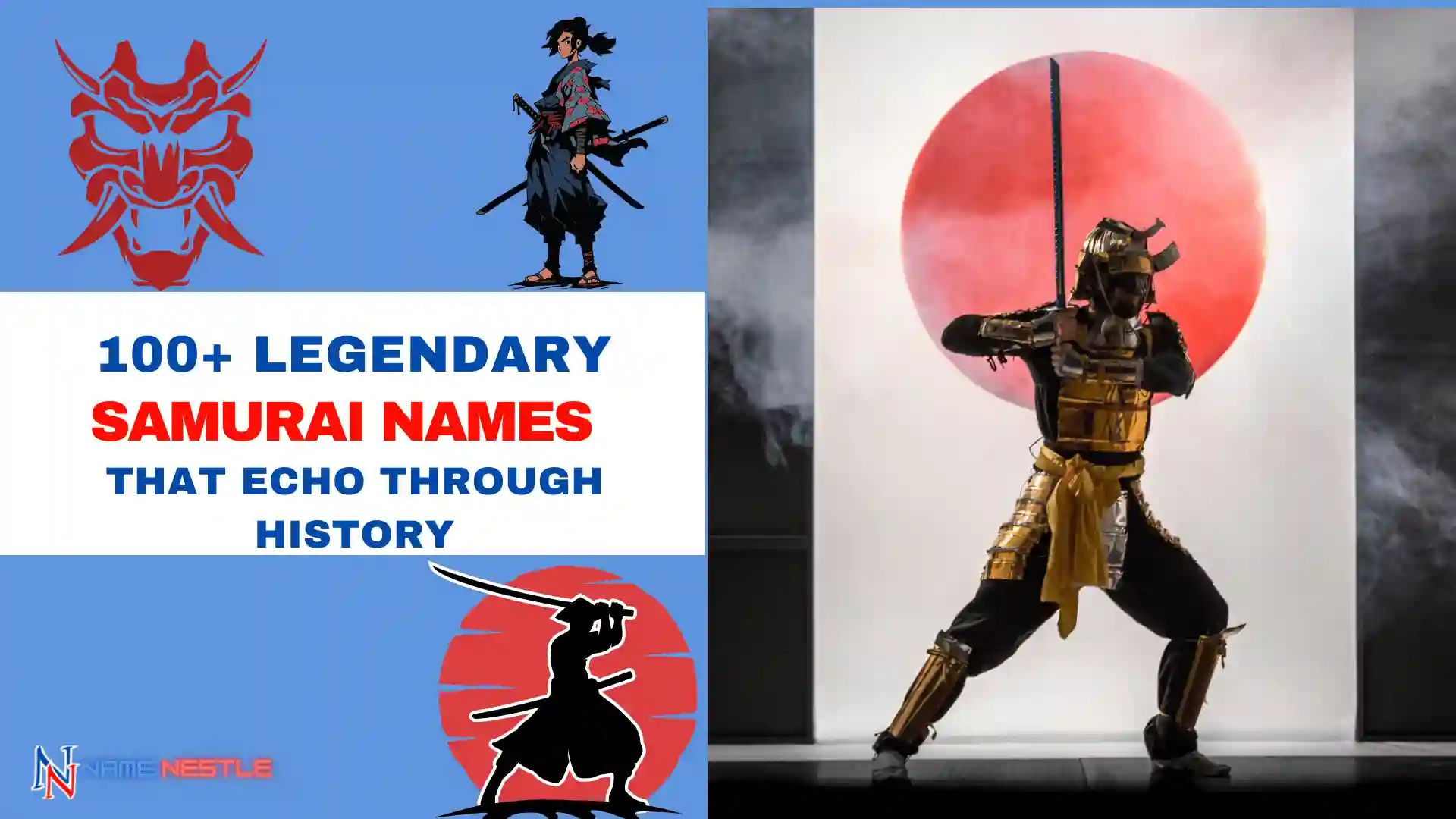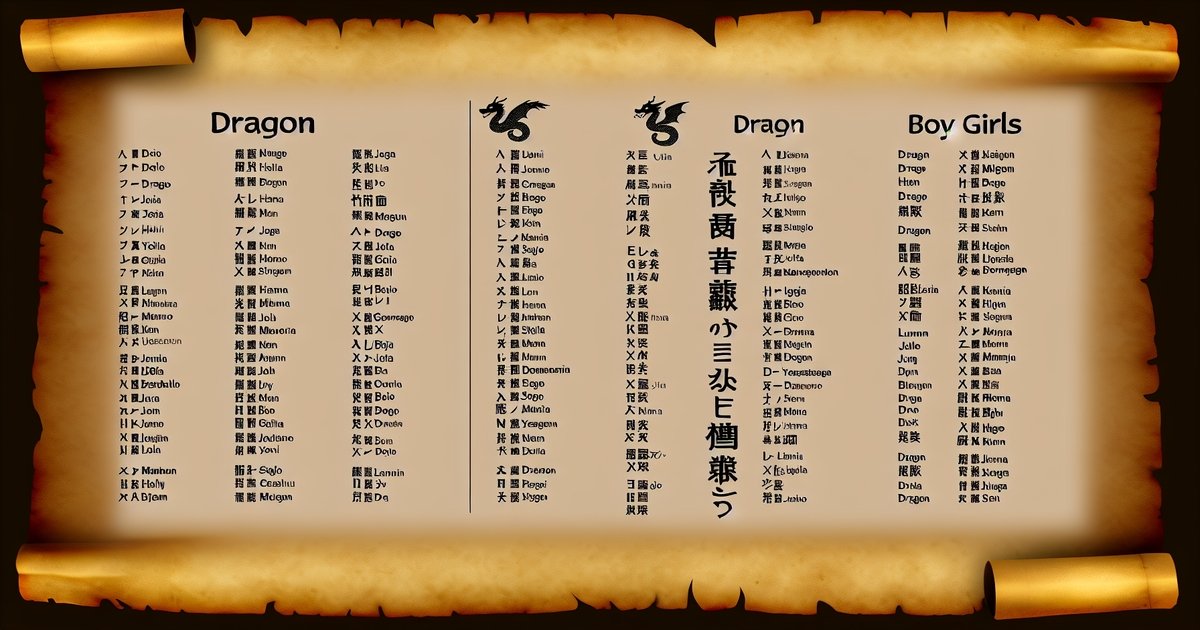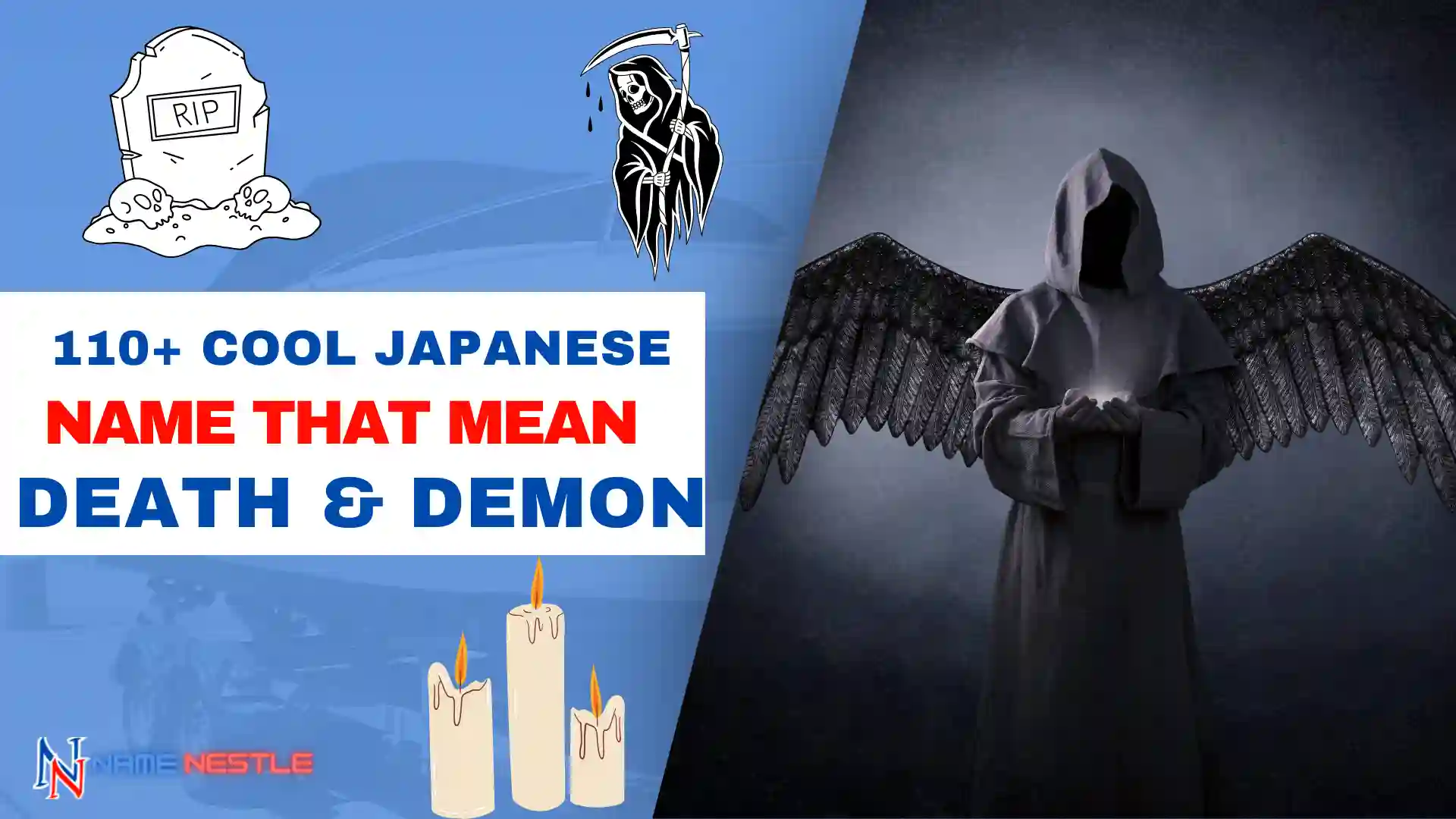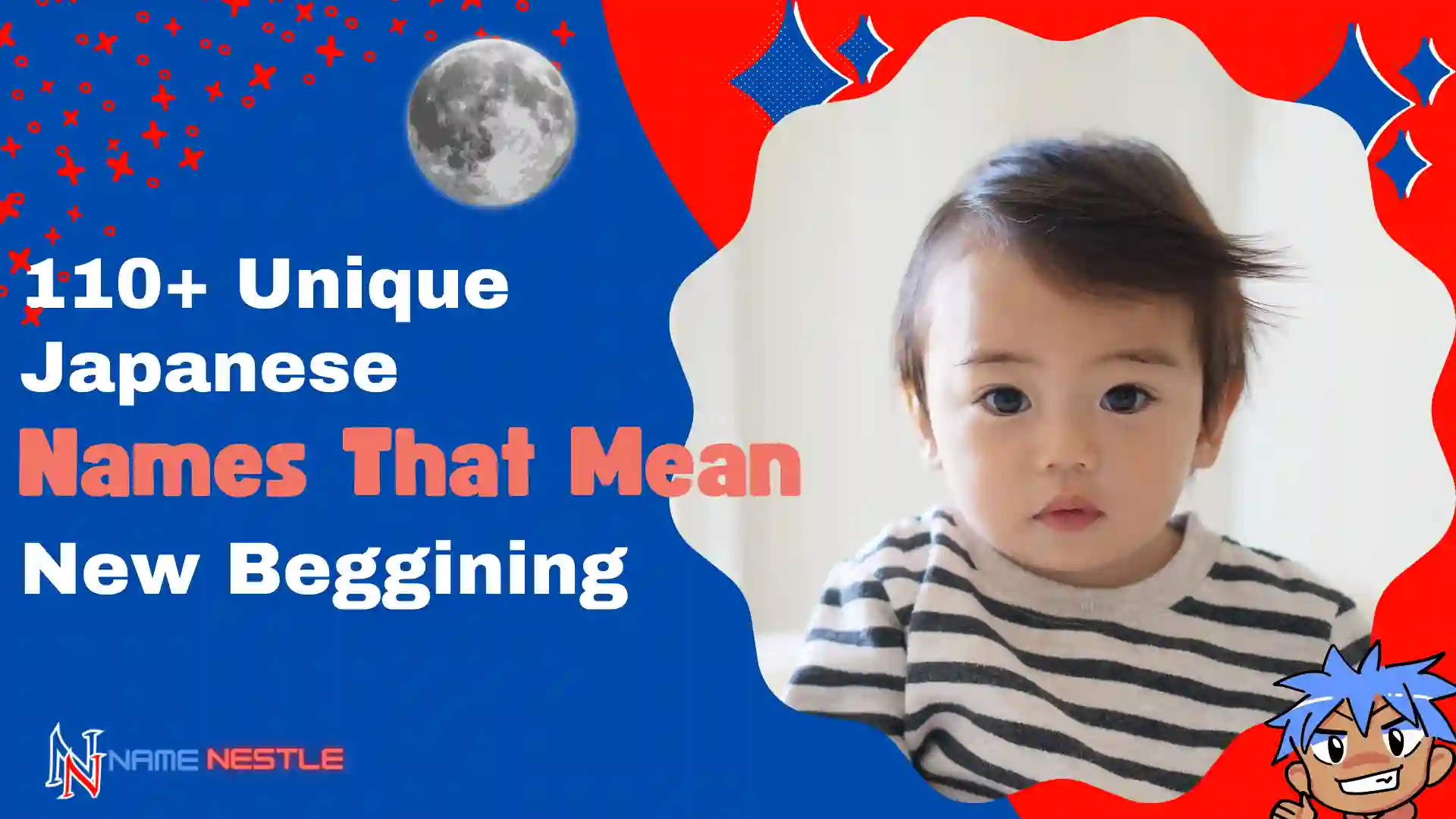Looking to channel your inner warrior? Seeking a name that exudes strength, honor, and bravery? In this listicle, we dive into the captivating world of samurai names. These legendary warriors from feudal Japan have left an indelible mark on history, and their names continue to inspire awe even today.
Get ready to embark on a journey as we reveal a collection of powerful samurai names that will ignite your imagination. From iconic figures like Miyamoto Musashi to lesser-known but equally formidable warriors, our list covers it all. With each name carefully selected for its significance and meaning, you’ll find yourself captivated by the rich heritage behind these monikers.
So scroll down and prepare to be enthralled by our top picks! Discover the perfect samurai name that resonates with your spirit as we unveil the stories behind these legendary warriors. Let’s delve into this ancient realm where honor meets valor – because every warrior deserves a name that reflects their true essence.
Legendary Samurai Names
1. Miyamoto Musashi

Miyamoto Musashi was a legendary samurai swordsman and strategist who lived during the Edo period in Japan. He is widely regarded as one of the greatest swordsmen in history, known for his unparalleled martial arts skills and unrivaled mastery of the sword.
One of Musashi’s notable achievements was authoring “The Book of Five Rings,” a renowned treatise on strategy, tactics, and philosophy. This book provides valuable insights into the art of combat and has been studied by martial artists, military strategists, and business leaders alike.
What sets Miyamoto Musashi apart from other samurais is his undefeated record in duels. Throughout his life, he engaged in numerous battles against skilled opponents from various schools of martial arts. Despite facing formidable adversaries, Musashi emerged victorious every time.
Musashi’s success can be attributed to his exceptional skill with weapons and his deep understanding of strategy. He developed a unique fighting style that combined elements from different schools of martial arts, enabling him to adapt to any situation or opponent.
His bravery and prowess were not limited to the battlefield alone; Miyamoto Musashi also excelled as an artist. He was proficient in calligraphy and painting, creating masterpieces that reflected his inner thoughts and philosophies.
Read More: 110+ Cool Japanese Name That Mean Death & Demon
2. Oda Nobunaga
Oda Nobunaga was a powerful daimyo during the Sengoku period in Japan. He played a crucial role in unifying the country and introducing firearms to the battlefield.
Nobunaga’s ambition to unify Japan led him to engage in numerous battles and conquests. He strategically positioned himself as a lord, gaining control over vast territories and amassing loyal servants who supported his cause. This allowed him to challenge other daimyos and assert his dominance.
One of Nobunaga’s notable achievements was his introduction of firearms, which revolutionized warfare at that time. By adopting this new technology, he gained an advantage over his opponents who were still relying on traditional weapons like swords and spears. The use of firearms gave him greater firepower on the battlefield, enabling him to overcome formidable enemies with relative ease.
During his reign, Nobunaga faced several rebellions from various social castes, including peasants who were dissatisfied with their living conditions. One significant rebellion was known as the Onin War, which erupted due to political instability and economic hardships plaguing Kyoto at that time.
Despite facing challenges such as rebellion within his own ranks and constant threats from rival daimyos seeking power for themselves, Oda Nobunaga proved himself as a skilled tactician and leader. His military prowess helped shape Japanese history by laying the foundation for future unification under subsequent leaders like Toyotomi Hideyoshi and Tokugawa Ieyasu.
3. Tokugawa Ieyasu
Tokugawa Ieyasu was a prominent figure in Japanese history, known as the founder of the Tokugawa shogunate. His achievements and contributions played a significant role in shaping Japan’s political landscape.
At the Battle of Sekigahara, Ieyasu achieved a decisive victory that solidified his power and marked the beginning of his ascent to leadership. This battle was instrumental in unifying Japan under his rule, as he successfully defeated rival feudal lords and consolidated his authority.
One of Ieyasu’s most notable accomplishments was establishing a long period of peace known as the Pax Tokugawa or Edo period. During this time, Japan experienced relative stability and prosperity. The central government strengthened its control over regional powers, leading to increased economic development and cultural growth.
Ieyasu’s governance was characterized by strict social hierarchy and centralized power. He implemented policies that limited the influence of daimyo (feudal lords) while promoting loyalty to the shogunate. By maintaining control over key strategic positions such as castles, he effectively curbed potential challenges to his rule.
Under Ieyasu’s leadership, foreign influences were carefully managed. Missionaries from Europe were restricted, ensuring that Christianity did not pose a threat to traditional Japanese values and culture. This approach helped preserve Japan’s unique identity during an era when European powers were expanding their global reach.
4. Minamoto no Yoshitsune
Minamoto no Yoshitsune is a legendary figure in Japanese history, renowned for his exceptional skills as a warrior and military commander. He played a pivotal role in the Genpei War, which took place between the powerful Taira clan and the Minamoto clan.
Yoshitsune’s most significant achievement was his victory over the Taira clan. Despite being outnumbered and facing formidable adversaries, he led his forces to triumph, ultimately bringing an end to the Taira rule. This decisive battle marked a turning point in Japanese history and solidified Yoshitsune’s status as one of Japan’s greatest samurai.
Yoshitsune’s strategic brilliance on the battlefield is widely celebrated. His ability to analyze enemy tactics, devise effective strategies, and lead his troops with unwavering determination set him apart from other warriors of his time. He demonstrated remarkable skill in swordsmanship and archery, making him an unstoppable force on the battlefield.
Despite his numerous successes, Yoshitsune faced many challenges throughout his life. He experienced political rivalries within his own clan that eventually led to exile and betrayal by those closest to him. These trials only added to the mystique surrounding this enigmatic samurai.
To this day, Minamoto no Yoshitsune continues to be revered as a symbol of courage, honor, and martial prowess in Japan. His legend lives on through various historical accounts, literature works like “The Tale of Heike,” plays such as “Kanadehon Chushingura,” and even modern-day adaptations in movies and television shows.
5. Takeda Shingen
Takeda Shingen was not only a skilled tactician but also a feared warrior during the Sengoku period in Japan. Leading the powerful Takeda clan, he left an indelible mark on Japanese history.
Known for his rivalry with Uesugi Kenshin, Takeda Shingen engaged in several battles against his formidable adversary. Their clashes were legendary and often considered some of the most intense and strategic confrontations of their time.
Takeda Shingen’s military prowess was complemented by his deep understanding of strategy and tactics. He employed innovative battle formations that capitalized on his troops’ strengths while exploiting weaknesses in enemy lines. This allowed him to achieve numerous victories throughout his career.
Beyond being a shogun, Takeda Shingen was also known for embracing Zen Buddhism. This philosophy influenced not only his personal life but also how he approached warfare. By incorporating principles such as discipline, mindfulness, and adaptability into his strategies, he gained an edge over opponents who relied solely on brute force.
Despite being a revered figure in Japanese history, Takeda Shingen met a tragic end when he fell ill during an invasion of Tokugawa territory. He passed away before achieving victory and securing long-term stability for the Takeda clan.\
Read More: 100+ Scary Japanese Demon Names | That Will Make You Shiver
6. Uesugi Kenshin
Uesugi Kenshin is revered as one of Japan’s finest strategists, known for his exceptional military skills and tactical brilliance. He was a prominent figure during the Sengoku period and played a significant role in shaping Japan’s history.
Kenshin engaged in numerous battles against his rival, Takeda Shingen, creating an intense rivalry that captivated the nation. Their clashes on the battlefield were legendary, showcasing their strategic prowess and martial abilities.
What set Uesugi Kenshin apart from other samurai was not only his skill in combat but also his unwavering loyalty to his lord and adherence to the code of honor. He embodied the principles of bushido, which emphasized virtues such as courage, integrity, and respect.
The name “Uesugi Kenshin” carries profound meaning. The kanji character for “ue” means “above,” while “sugi” translates to “cedar tree.” This combination symbolizes strength and stability. “Kenshin” can be interpreted as having two possible meanings: “ken” represents sword or study of martial arts while “shin” signifies heart or spirit. Together, these characters reflect Kenshin’s dedication to mastering both the art of war and maintaining a noble spirit.
Despite being a fearsome warrior renowned for his military achievements, Uesugi Kenshin had a unique perspective on life compared to other samurai leaders of his time. He believed in promoting peace within society rather than constantly seeking conquests through warfare.
7. Date Masamune
Date Masamune, also known as the “One-Eyed Dragon,” was a feared warrior who ruled over the Date clan in northeastern Japan. Despite losing his right eye to smallpox at a young age, Masamune became one of the most influential samurai in Japanese history.
Masamune’s reign was marked by several notable achievements. One of his key contributions was the encouragement of foreign trade and cultural exchange. He recognized the importance of connecting with other nations and saw the potential for economic growth through international relations.
Under Masamune’s leadership, he established trade routes with European countries such as Spain and England. This allowed for the introduction of new goods, technologies, and ideas into Japan. The exchange of knowledge between different cultures played a significant role in shaping Japan’s future development.
Masamune’s vision extended beyond just trade; he actively promoted cultural exchange as well. He welcomed foreign visitors to his domain and encouraged them to share their customs and traditions with his people. This openness fostered an atmosphere of learning and appreciation for diverse cultures within his territory.
Furthermore, Masamune supported artistic endeavors by patronizing renowned artists and craftsmen during his rule. This led to the flourishing of various art forms such as lacquerware, ceramics, armor-making, and tea ceremonies in northeastern Japan.
8. Saigo Takamori
Saigo Takamori was a prominent figure in the Meiji Restoration, a pivotal period in Japanese history. He played a crucial role in overthrowing the Tokugawa shogunate and establishing a new government. However, despite his contributions to the formation of this new regime, he later led a rebellion against it.
Takamori symbolized samurai values and embodied the bushido spirit. He believed strongly in honor, loyalty, and duty. His actions during the Meiji Restoration were driven by his dedication to preserving these traditional ideals amidst modernization.
Despite being seen as a hero by some for his efforts in bringing about political change, others criticized him for rebelling against the very government he helped create. This rebellion is known as the Satsuma Rebellion and took place from 1877 to 1878.
Takamori’s story showcases both the complexity of historical figures and their impact on shaping society. His actions reveal how individuals can be torn between their beliefs and changing times.
9. Sakamoto Ryoma
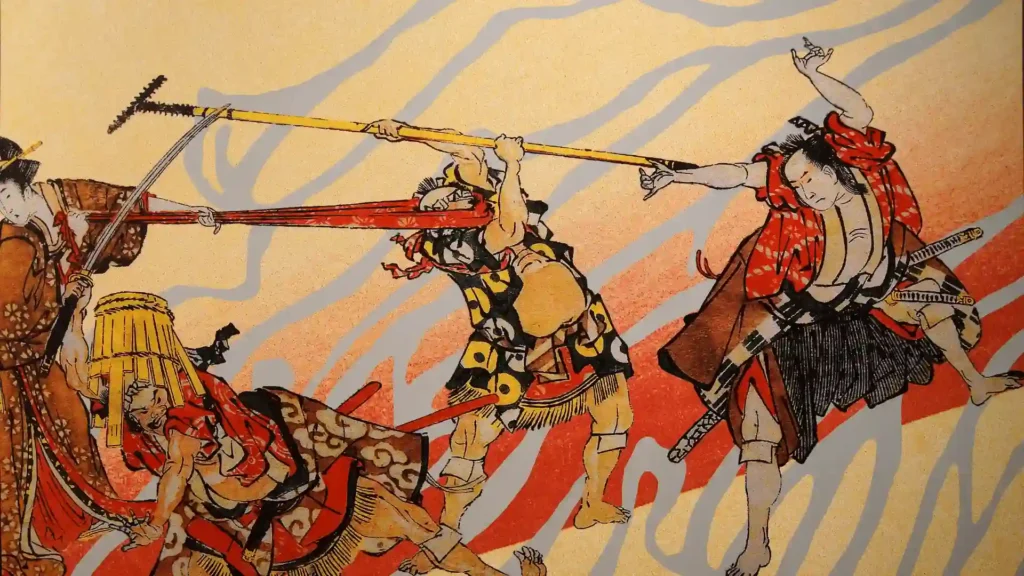
Sakamoto Ryoma was an influential figure in the movement to overthrow the shogunate in Japan during the late 19th century. His ideas and actions played a crucial role in shaping modern Japan as we know it today.
Ryoma was a visionary who advocated for modernization and Western ideas at a time when Japan was still largely isolated from the rest of the world. He believed that embracing these new concepts would help propel Japan forward and enable it to compete on a global scale.
Tragically, Ryoma’s life was cut short when he was assassinated at a young age. However, his legacy lived on, inspiring countless others to continue his work and fight for change. The impact he made during his short time on Earth cannot be overstated.
Ryoma’s story serves as a reminder that even one person can make a significant difference in the world. His determination, courage, and unwavering belief in progress continue to inspire people today.
10. Hattori Hanzo
Hattori Hanzo, a renowned ninja and samurai retainer, is one of the most famous names in Japanese history. He served as a loyal vassal to Tokugawa Ieyasu during the Sengoku period in Japan.
Known for his exceptional espionage skills and strategic mind, Hattori Hanzo played a crucial role in ensuring the success of Tokugawa’s rule. His expertise in gathering intelligence and carrying out covert operations made him an invaluable asset on the battlefield.
Hattori Hanzo’s reputation was built upon his ability to navigate through treacherous situations with precision and finesse. Whether it was infiltrating enemy territories or protecting his lord from assassination attempts, he displayed unwavering loyalty and dedication.
His name has become synonymous with honor and bravery, earning him a place among the legendary figures of Japanese history. The title “Hanzo” itself carries great significance as it represents someone who possesses extraordinary skill with both blade and pen.
In popular culture, Hattori Hanzo’s name continues to be celebrated through various mediums such as movies, video games, and literature. His story serves as an inspiration for those who strive to overcome adversity with courage and determination.
The legacy of Hattori Hanzo reminds us that true strength lies not only in physical prowess but also in intellect and resourcefulness. He exemplified the principles of Bushido – the way of the warrior – which emphasized discipline, loyalty, honor, respect, compassion,and self-control.
11. Ishikawa Goemon
Ishikawa Goemon is a legendary outlaw and folk hero in Japan. He is known for his daring exploits and attempts to assassinate Oda Nobunaga, a powerful warlord during the Sengoku period. However, his story took a tragic turn when he was captured and executed in a famous boiling oil punishment.
Goemon’s attempt to assassinate Oda Nobunaga showcases his bravery and determination. Despite the risks involved, he plotted an attack on the warlord’s residence in Kyoto. This bold act demonstrates Goemon’s unwavering commitment to justice and his willingness to stand up against oppression.
Unfortunately, Goemon’s plan was foiled, leading to his capture by Nobunaga’s forces. His execution by being boiled alive has become one of the most well-known methods of punishment in Japanese history. This gruesome fate highlights the severity of crimes during that time period and serves as a cautionary tale for those who dare challenge authority.
The legend of Ishikawa Goemon has inspired numerous works of art, literature, and theater throughout history. His story continues to captivate audiences with its themes of rebellion, honor, and sacrifice.
Read More: 111+ Cool Japanese Names that Mean Dark
12. Kusunoki Masashige
Kusunoki Masashige is a legendary figure in Japanese history, revered for his unwavering loyalty and patriotism. He played a significant role during the Nanbokucho period by leading the resistance against the Ashikaga shogunate. Masashige’s name has become synonymous with bravery and sacrifice.
During this tumultuous time in Japan, two rival imperial courts vied for power: the Northern Court and the Southern Court. The Ashikaga shogunate supported the Northern Court, while Kusunoki Masashige sided with the Southern Court. Despite being outnumbered and facing numerous challenges, he fought valiantly to protect his beliefs.
One of the most remarkable aspects of Kusunoki Masashige’s story is his refusal to surrender even when faced with overwhelming odds. Rather than submitting to defeat, he chose an honorable death through ritual suicide known as seppuku or harakiri.
Masashige’s legacy lives on as a symbol of courage and devotion to one’s principles. His story continues to inspire people across generations in Japan and beyond.
13. Shimazu Yoshihiro
Shimazu Yoshihiro was a skilled military commander of the Shimazu clan, known for his strategic brilliance on the battlefield. He led successful campaigns in Kyushu and even ventured into Korea.
Yoshihiro’s innovative tactics set him apart from other samurai commanders of his time. One notable example is his use of “Ichi no Sho,” a tactic where he divided his forces into two groups, attacking simultaneously from different directions to confuse and overwhelm the enemy. This strategy proved highly effective in several battles, including the Battle of Mimigawa.
In addition to his tactical prowess, Yoshihiro also demonstrated exceptional leadership skills. He inspired loyalty among his troops by leading from the front lines and showing unwavering bravery in combat. His charismatic personality earned him respect not only from his own soldiers but also from rival clans.
One of Yoshihiro’s most famous achievements was during the Korean invasions in the late 16th century. Despite facing overwhelming odds, he managed to repel enemy forces through strategic maneuvers and sheer determination. His victories played a crucial role in securing Japanese interests in Korea at that time.
To this day, Shimazu Yoshihiro remains an iconic figure in Japanese history, revered for his military accomplishments and contributions to samurai warfare tactics. His name continues to inspire awe and admiration among historians and enthusiasts alike.
14. Honda Tadakatsu
Honda Tadakatsu was a formidable samurai known as the “Samurai without a Rival.” He served under Tokugawa Ieyasu and his son Hidetada, playing a crucial role in their campaigns. What set Honda Tadakatsu apart was not only his loyalty but also his distinctive red armor and exceptional skill with the spear.
Tadakatsu’s reputation as an unmatched warrior stemmed from his numerous victories on the battlefield. His prowess with the spear, combined with his unwavering courage, made him a force to be reckoned with. He commanded respect from both allies and enemies alike.
One of Tadakatsu’s most famous battles was at the Battle of Sekigahara in 1600. Despite being outnumbered, he fought valiantly alongside Tokugawa Ieyasu’s forces and emerged victorious. This victory solidified Tokugawa Ieyasu’s position as ruler of Japan and marked the beginning of over two centuries of peace under the Tokugawa shogunate.
Tadakatsu’s red armor became synonymous with his name and added to his intimidating presence on the battlefield. The color red symbolized strength, power, and fearlessness—qualities that perfectly embodied this legendary samurai.
Even though Honda Tadakatsu achieved great success as a warrior, he was also known for being humble and kind-hearted off the battlefield. Despite having such an imposing reputation, he treated others with respect and compassion—a testament to his character beyond just martial prowess.
15. Sanada Yukimura
Sanada Yukimura was a valiant warrior who gained fame for his defense of Osaka Castle during the Siege of Osaka in the early 17th century. His name has become synonymous with bravery and heroism in Japanese history.
Yukimura was not only a skilled swordsman but also an expert in guerrilla warfare tactics and castle defense strategies. He utilized unconventional methods to outsmart his enemies, often employing surprise attacks and ambushes. This made him a formidable opponent on the battlefield.
During the Siege of Osaka, Yukimura led his troops against overwhelming odds, defending the castle against Tokugawa forces for months. Despite ultimately losing the battle, he earned respect from both allies and adversaries for his unwavering courage and determination.
Yukimura’s legacy as one of Japan’s greatest heroes has endured throughout the years. His story has been immortalized in literature, theater, and popular culture, cementing his place as an iconic figure in Japanese history.
Famous Figures:
- Miyamoto Musashi – Renowned swordsman and author of the “Book of Five Rings”
- Date Masamune – One-eyed Dragon of Ōshu, known for his tactical brilliance
- Minamoto no Yoshitsune – Legendary warrior of the Genpei War
- Tokugawa Ieyasu – Founder of the Tokugawa Shogunate
- Oda Nobunaga – Ruthless warlord who unified much of Japan
- Toyotomi Hideyoshi – Unified Japan after Nobunaga’s death
- Kusunoki Masashige – Loyal samurai known for his defense of Shiroishi Castle
- Hattori Hanzō – Ninja leader known as the “Demon Ninja”
- Sanada Yukimura – Renowned strategist and fierce warrior
- Uesugi Kenshin – “Dragon of Echigo,” known for his military prowess
Other Samurai Names:
- Honda Tadakatsu – “Undefeated Samurai” known for his strength and loyalty
- Yamauchi Kazutoyo – Founder of the Mito Domain
- Ii Naomasa – Fought valiantly at the Battle of Sekigahara
- Sakai Tadatsugu – Skilled archer known for his bravery
- Kato Kiyomasa – Fierce warrior known as the “Tiger of Korea”
- Tachibana Ginchiyo – “The Last Female Samurai”
- Akechi Mitsuhide – Betrayed Oda Nobunaga
- Mori Motonari – Strategist known as the “Salamander of Aki”
- Takeda Shingen – Rival of Uesugi Kenshin, known as the “Tiger of Kai”
- Anegakoji Katsutoyo – Skilled tactician
Names with Meanings:
- Takeo – “Bamboo man” – signifying strength and resilience
- Yamato – “Great harmony” – representing peace and unity
- Kenji – “Strong man” – denoting power and bravery
- Hiroki – “Magnificent and joyful” – suggesting a noble spirit
- Shin – “Truth” – symbolizing honesty and integrity
- Akira – “Bright” – implying intelligence and potential
- Masao – “Truthful man” – representing justice and honor
- Ryuuichi – “Dragon, first son” – signifying leadership and nobility
- Kaito – “Ocean, kite” – representing vastness and ambition
- Hayato – “Falcon” – symbolizing swiftness and focus
Read More: 50+ Japanese Names that Mean Dragon For Boys And Girls
Cool Samurai Names

Evoking Power and Skill:
- Kagemitsu – “Shadow Warrior” – Stealthy and deadly
- Arashi – “Storm” – Unpredictable and ferocious
- Kaito – “Ocean, Kite” – Vast and powerful
- Jin – “Benevolent” – Strong with a sense of justice
- Goro – “Fifth Son” – Suggests resilience after overcoming challenges
- Tora – “Tiger” – Fierce and independent
Nature-Inspired Names:
- Yama – “Mountain” – Immovable and strong
- Sora – “Sky” – Limitless potential
- Hoshi – “Star” – Ambition and guidance
- Kaze – “Wind” – Swift and adaptable
- Kawa – “River” – Flowing with power and grace
Unique and Striking Names:
- Akatsuki – “Dawn” – Signifying a new era
- Kagehiro – “Shadow Hero” – Mysterious and skilled
- Raiden – “Thunder” – Commanding and awe-inspiring
- Setsuna – “Moment” – Living fully in the present
- Yukimura – “Snow Village” – Calm and beautiful with hidden strength
Meaningful Names:
- Yamato Takeru – “Yamato’s Bravery” – Powerful protector
- Kenshin – “Truthful Heart” – Skillful with strong morals
- Masamune – “Constant Truth” – Reliable and unwavering
- Hiro – “Abundant” – Prosperous and resourceful
- Aoi – “Blue” – Tranquility and loyalty
Combinations for Unique Flair:
- Ren – “Lotus” (Peace) + Shin – “Truth” (Honesty) = Renshin – “Peaceful Truth”
- Kaito – “Ocean, Kite” (Vastness) + Sora – “Sky” (Limitless) = Kaitosora – “Vast Sky”
- Hoshi – “Star” (Ambition) + Arashi – “Storm” (Unpredictable) = Hoshiarashi – “Storm of Ambition”
- Takeo – “Bamboo Man” (Strength) + Jin – “Benevolent” (Justice) = Takeojin – “Benevolent Strength”
- Yukimura – “Snow Village” (Calm) + Tora – “Tiger” (Fierce) = Yukimura Tora – “Calm Tiger”
Recommended: 110+ Cool Japanese Names That Mean Ice For Boys & Girls
Final Remarks
From the legendary Miyamoto Musashi to the valiant Sanada Yukimura, these warriors embodied the essence of honor, loyalty, and skill on the battlefield. By delving into their stories, we gain a deeper appreciation for the rich tapestry of samurai culture.
As you reflect on these remarkable figures, consider how their values and principles can inspire you in your own life. Embrace the spirit of determination and discipline that defined these warriors. Channel their unwavering commitment to excellence as you face your own challenges and strive for personal growth.
The legacy of these samurai lives on, reminding us that greatness is within our reach. So take a moment to honor their memory and let their stories fuel your own journey. Let their names resonate with you as you forge your path forward. And remember, just like these legendary samurai, you too have the power to leave an indelible mark on the world.
Frequently Asked Questions
What are some famous samurai names?
Some famous samurai names include Miyamoto Musashi, Oda Nobunaga, Tokugawa Ieyasu, Minamoto no Yoshitsune, Takeda Shingen, Uesugi Kenshin, Date Masamune, Saigo Takamori, Sakamoto Ryoma, Hattori Hanzo, Ishikawa Goemon, Kusunoki Masashige , Shimazu Yoshihiro , Honda Tadakatsu and Sanada Yukimura.
Who was Miyamoto Musashi?
Miyamoto Musashi was a renowned Japanese swordsman and philosopher. He is considered one of the greatest swordsmen in history and is known for his undefeated record in duels. His book “The Book of Five Rings” is still studied today as a classic text on strategy and martial arts.
Who was Oda Nobunaga?
Oda Nobunaga was a powerful daimyo (feudal lord) during Japan’s Sengoku period. He played a significant role in unifying Japan under his rule through military conquests and political alliances. Despite his brutal tactics at times, he introduced several reforms that laid the foundation for Japan’s modernization.
Who was Tokugawa Ieyasu?
Tokugawa Ieyasu was the founder and first shogun of the Tokugawa shogunate that ruled Japan from 1603 to 1868. He successfully unified Japan after defeating rival warlords in the Battle of Sekigahara. His reign marked an era of peace and stability known as the Edo period.
Who was Minamoto no Yoshitsune?
Minamoto no Yoshitsune was a legendary warrior during the late Heian period in Japan. Despite facing adversity within his own clan due to political struggles with his brother Yoritomo, Yoshitsune became known for his military prowess and strategic genius. He is celebrated as one of Japan’s greatest samurai heroes.
